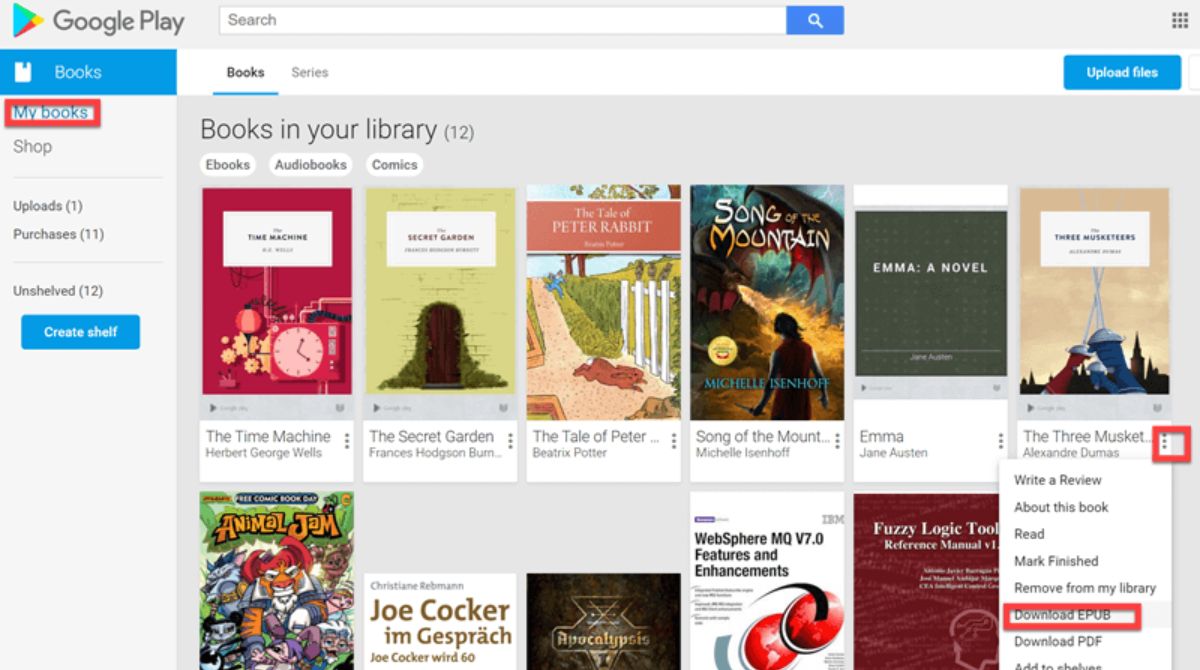Introduction
Welcome to the world of book lending libraries! Are you passionate about literature and eager to share your love for reading with others? Starting a book lending library is a fantastic way to build a sense of community, promote literacy, and provide access to books for those who may not have the means to purchase them. Whether you’re creating a library in your neighborhood, at a community center, or even at your workplace, the process is both exciting and rewarding.
By establishing a book lending library, you’re not only encouraging reading among individuals but also cultivating a space for individuals to come together, discuss literature, and broaden their knowledge. This article will guide you through the essential steps to successfully start and run your own book lending library.
Before diving into the practical aspects, it’s important to have a clear vision and mission for your library. What do you hope to achieve through this initiative? Is it to foster a love for reading among children, provide a diverse range of reading materials for a specific community, or create a haven for book enthusiasts of all ages? Identifying your goals will ultimately shape the direction of your library and influence decision-making throughout the process.
Additionally, understanding the needs and interests of your target audience is crucial. Are you primarily targeting readers of a specific age group or catering to a diverse community? Consider conducting surveys or engaging in discussions with potential library users to gain insights into their reading preferences and requirements. This valuable information will help you curate a collection that caters to their needs and interests.
Starting a book lending library is a venture that requires dedication, time, and effort. However, the impact it will have on individuals’ lives and the community as a whole makes it a worthwhile endeavor. So, without further ado, let’s begin the journey of establishing your own book lending library!
Finding a Location
The first and foremost step in starting a book lending library is finding an ideal location. The location you choose will determine the accessibility and visibility of your library, so it’s essential to consider several factors.
Begin by assessing the needs of your target audience. Are you targeting a specific community, such as students, families, or a particular neighborhood? Understanding the demographics will help you narrow down potential locations that are conveniently located for your intended users.
If you’re aiming to serve a particular community, consider partnering with existing organizations or community centers that already have a built-in audience. This can help you tap into their existing network and establish your library as a valuable resource within the community.
Accessibility is another crucial factor to consider when choosing a location for your library. Look for a place that is easily accessible by public transportation and has ample parking options. Ideally, it should be centrally located, making it convenient for people from various neighborhoods to visit your library.
Consider the physical space requirements for your library. Will you need a large area to accommodate a significant collection of books, or will a smaller space suffice? Take measurements and ensure that the location you choose can comfortably house your collection while also allowing for reading areas, shelves, and other necessary amenities.
When searching for a location, don’t forget to keep your budget in mind. Consider whether you can afford the rent or lease for the space you’re interested in. If you’re operating on a tight budget, explore alternative options such as shared spaces or partnerships with local businesses that have available space.
Furthermore, prioritize safety and security when choosing a location for your library. Assess the neighborhood and its crime rate. Look for a location that has proper lighting, security measures, and a safe environment for visitors.
Lastly, don’t underestimate the power of visibility. Choose a location that is easily visible and has the potential to attract attention from passersby. Being visible can help attract new members and create awareness about your library in the community.
Finding the perfect location for your book lending library may take time and effort, but it’s a crucial step in ensuring the success and impact of your initiative. Once you’ve found the perfect spot, you can move on to the next step: building and organizing your collection.
Building and Organizing the Collection
Building a diverse and engaging collection lies at the heart of a successful book lending library. The books you choose will determine the variety of genres, topics, and reading levels available to your members. Here are some steps to help you build and organize an exceptional collection for your library.
Start by determining the scope and focus of your library’s collection. Consider the interests and preferences of your target audience. Are you catering to children, teens, adults, or a mixture of age groups? Identify the genres and topics that appeal to your users, ensuring a balanced representation across different categories.
Acquiring books for your collection can be done through various channels. Consider reaching out to local publishers, bookstores, and authors to inquire about book donations or discounts. Hosting book drives in the community can also be an effective way to gather additional resources for your library. Remember to emphasize the importance of quality and condition when accepting book donations.
Keep in mind that books in different formats can enhance the diversity and inclusivity of your collection. Consider including audiobooks, e-books, and large print editions to accommodate different reading preferences and accessibility needs.
Once you’ve acquired the books, it’s crucial to organize them efficiently. Use a classification system, such as the Dewey Decimal System or Library of Congress Classification, to categorize and label your books. This system ensures that books are easily located and helps users navigate the collection effectively.
Create sections or shelves dedicated to different genres or age groups. This facilitates browsing and makes it easier for users to find books that align with their interests. Additionally, consider labeling books with reading levels or age recommendations to assist parents and educators in making appropriate selections.
Implement a check-in and check-out system to keep track of borrowed books and ensure their timely return. This can be done manually using cards or through computerized library management software. Utilize barcode scanners and online cataloging systems to streamline the borrowing process and make it more efficient for both librarians and members.
Regularly evaluate the collection to ensure its relevance and appeal to your users. Remove outdated books or titles that are in poor condition. Encourage members to provide feedback and suggestions for new additions to the collection. This ongoing assessment and responsiveness will help keep your library’s collection vibrant and engaging.
Building and organizing a collection for your book lending library requires careful consideration and strategic planning. By curating a diverse collection and implementing efficient organizational systems, you’ll ensure that your library provides an enriching reading experience for all its members.
Book Donations and Acquisitions
Building a robust collection for your book lending library often requires a combination of book donations and acquisitions. By actively seeking out books and inviting contributions from the community, you can cultivate a diverse and engaging assortment of reading materials. Here are some strategies to consider when acquiring books for your library.
1. Book Donations: Reach out to individuals, local businesses, schools, and community organizations to request book donations. Spread the word about your library’s mission and the importance of promoting literacy within the community. Set up collection bins in public spaces, organize book drives, or participate in community events to attract book donations. Be clear about the type of books you are seeking and emphasize the importance of quality and condition.
2. Partnerships: Collaborate with bookstores, publishers, and authors to secure discounted or donated books. Many businesses and individuals are willing to support local initiatives, especially those promoting literacy and education. Establish relationships with these partners to acquire new releases, bestsellers, and other popular titles that will attract readers to your library.
3. Fundraising: Consider organizing fundraising events or campaigns to generate funds for purchasing books. This can include hosting book sales, partnering with local artisans for collaborative projects, or even crowdfunding initiatives. Engage the community by sharing your library’s progress and the impact it has on readers. Use the funds raised to purchase books that complement your collection.
4. Grants and Sponsorships: Research grants and sponsorship opportunities that support literacy initiatives. Many organizations and foundations offer grants specifically for libraries and educational programs. Craft compelling proposals highlighting the unique benefits your library brings to the community. Make sure to adhere to any specific guidelines or requirements when applying for grants or seeking sponsorships.
5. Thrift Stores and Secondhand Bookshops: Explore thrift stores, secondhand bookshops, and online platforms that offer used books at affordable prices. By carefully curating selections from these sources, you can expand your collection while being mindful of your budget. Maintain quality standards, ensure the books are in good condition, and consider adding a section for gently-used books in your library to accommodate these offerings.
Remember, it’s important to continually assess and evaluate the collection to ensure it remains current, relevant, and appealing to your readers. Regularly review the condition of donated books and make informed decisions about their inclusion in the library. Seek feedback from patrons regarding their reading preferences and stay open to suggestions for new acquisitions. By combining book donations and strategic acquisitions, you can curate a collection that caters to the diverse needs and interests of your library’s members.
Setting Up Membership and Borrowing Policies
Creating a seamless and user-friendly membership system is crucial for the smooth operation of your book lending library. By establishing clear and fair membership and borrowing policies, you can ensure that all members have access to the books they desire while maintaining the integrity of your collection. Here are some guidelines to help you set up membership and borrowing policies.
1. Membership Types: Determine the types of memberships you will offer, such as individual memberships, family memberships, or student memberships. Consider the needs and preferences of your target audience when deciding on the membership options. Determine whether you will charge a membership fee and establish the duration of the membership period.
2. Registration Process: Develop a straightforward registration process for individuals interested in becoming members. This can be done through an online form on your library’s website or through in-person registration at the library. Ensure that the registration process prompts members to provide necessary information, such as contact details and any specific requirements or preferences they may have.
3. Membership Benefits: Clearly communicate the benefits of becoming a library member. This can include access to the library’s entire collection, borrowing privileges, participation in library events and programs, discounts on book purchases, or access to digital resources. Highlight the value and advantages of membership to attract and retain members.
4. Borrowing Policies: Define the borrowing policies to ensure fair and equitable access to the library’s books. Determine the number of books a member can borrow at a time, the loan period, and any possible renewals. Implement a system for placing requests and reservations for popular or high-demand books.
5. Late Fees and Fines: Establish a policy regarding late fees and fines for overdue books. Clearly communicate the consequences of failing to return books on time to encourage responsible borrowing behavior. Decide on the amount and duration of late fees, as well as any consequences for repeated violations.
6. Return and Renewal Process: Clearly communicate the process for returning borrowed books and renewing loans. Provide drop-off boxes or designated return areas for convenient book returns. Enable online or over-the-phone renewals to accommodate busy schedules and promote ease of access for members.
7. Membership Management: Implement a comprehensive membership management system to keep track of members, their borrowing history, and contact information. This can be done through library management software or a manual record-keeping system. Regularly update member records and ensure privacy and confidentiality of member information.
8. Member Feedback and Communication: Encourage member feedback and ideas for improving the library’s services. Maintain open lines of communication through email newsletters, social media platforms, or suggestion boxes within the library. Seek input from members to understand their needs and preferences, making adjustments to policies and services accordingly.
By setting up clear and fair membership and borrowing policies, you can establish a positive and inclusive environment for all library members. It ensures smooth operations, encourages responsible borrowing practices, and fosters a strong sense of community within your book lending library.
Creating a Catalog System
A well-organized catalog system is essential for efficiently managing and accessing the books in your lending library. By creating a comprehensive catalog, you ensure that members can easily search for and locate their desired books. Here are some steps to help you establish an effective catalog system for your library.
1. Choose a Cataloging System: Select a cataloging system that best suits the needs of your library. The Dewey Decimal System and the Library of Congress Classification System are widely used and recognized. Whichever system you choose, ensure that it aligns with the type and scale of your collection.
2. Standardize Catalog Entries: Create a standardized format for catalog entries. Include important information such as the book’s title, author, publisher, publication year, and ISBN or other identification numbers. Consistency in catalog entries simplifies searching and retrieval processes.
3. Utilize Library Management Software: Implement library management software that automates cataloging and streamlines processes. Choose software that integrates with your chosen cataloging system and offers features like barcode scanning, online access, and customizable search options. This ensures efficient management and ease of use for both library staff and members.
4. Assign Unique Identifiers: Assign unique identifiers to each book, such as barcode numbers or RFID tags. These identifiers link each physical book to its catalog entry in the database, facilitating easy tracking and efficient retrieval.
5. Categorize and Organize: Categorize books based on genres, subjects, authors, or any other relevant criteria. Establish a logical arrangement that makes it easy for members to find books within the library. Utilize shelves, labels, and signage to create a visually intuitive layout.
6. Provide Search Tools: Create user-friendly search tools, whether it’s an online catalog search engine or a catalog station within the library. Incorporate search filters and advanced search options to enable members to find books based on specific criteria, such as title, author, genre, or keywords.
7. Update and Maintain Catalog: Regularly update and maintain your catalog system. Add new acquisitions, remove books that are no longer part of the collection, and make necessary edits to catalog entries. This ensures accuracy and reflects the current state of your library.
8. Accessibility and Online Catalog: Consider providing an online catalog for members to access and search the library’s collection remotely. This expands your library’s reach and improves accessibility for members who cannot physically visit the library. Ensure that the online catalog is user-friendly, responsive, and regularly updated.
9. Staff Training: Train your library staff on the use of the catalog system and the library management software. Ensure they are familiar with the cataloging process, searching capabilities, and troubleshooting common issues. This empowers staff to assist members effectively and provide a seamless experience.
Creating an efficient and user-friendly catalog system improves the overall functionality and member experience within your lending library. By implementing these steps, you’ll provide a seamless browsing and searching process, facilitating the discovery and enjoyment of books for your library members.
Marketing and Promoting Your Library
Marketing and promoting your book lending library is essential to attract new members and create awareness within the community. By effectively communicating the value and benefits of your library, you can encourage more people to engage with your collection and services. Here are some strategies to help you market and promote your library.
1. Develop a Brand Identity: Create a unique and recognizable brand identity for your library. This includes a logo, color scheme, and consistent visual elements that convey the essence of your library’s mission and values. Use these elements consistently across promotional materials and online platforms.
2. Create a Website: Establish a professional website that showcases your library’s offerings, events, and information about membership. Ensure the website is user-friendly, visually appealing, and responsive across different devices. Include an online catalog, news updates, and a contact page for inquiries.
3. Social Media Presence: Leverage social media platforms to reach a wider audience and engage with potential members. Create accounts on platforms such as Facebook, Instagram, and Twitter to share updates, book recommendations, and event information. Consistently engage with followers, respond to messages and comments, and build a community around your library.
4. Collaborate with Local Organizations: Establish partnerships with local schools, community centers, and businesses to increase visibility and promote joint initiatives. Collaborate on events, workshops, or reading programs that align with your library’s mission. Engage in cross-promotion to expand reach and attract new members.
5. Host Engaging Events: Organize events that appeal to your target audience and showcase the value of your library. This can include author talks, book clubs, reading challenges, storytelling sessions, or workshops on writing or literary skills. Encourage community involvement and make events accessible to diverse age groups.
6. Word-of-Mouth Referrals: Encourage your current members to spread the word about your library to their friends, family, and colleagues. Offer incentives, such as referral discounts or rewards, to motivate members to refer others to your library. Positive recommendations go a long way in building trust and credibility.
7. Local Media and Publications: Engage with local media outlets, newspapers, and community publications to feature stories about your library. Share success stories, highlight community involvement, or provide book recommendations through guest articles or interviews. This exposure brings attention to your library and its valuable contributions.
8. Outreach Programs: Extend your library’s reach by engaging in outreach programs in the community. Offer book donation drives, pop-up libraries at local events, or collaborate with schools to promote reading and literacy. Be visible in public spaces and actively demonstrate the value and importance of your library.
9. Member Testimonials: Collect testimonials from satisfied members and share them on your website, social media platforms, and promotional materials. Real-life stories and positive experiences help build trust and credibility, encouraging potential members to engage with your library.
Marketing and promoting your book lending library requires a strategic and consistent effort. By utilizing these strategies, you can effectively reach your target audience, increase awareness, and establish your library as a valued and integral part of the community.
Hosting Events and Programs
Hosting events and programs is a fantastic way to engage with your community, foster a love for reading, and create a vibrant atmosphere within your book lending library. By offering a variety of events and programs, you can cater to different interests and age groups, attracting new members and keeping existing ones engaged. Here are some ideas and strategies to help you plan and host successful events and programs.
1. Author Talks and Book Signings: Invite authors to speak about their books, writing process, and literary experiences. Organize Q&A sessions and book signings to create a personal connection between authors and readers. Collaborate with local bookstores or literary organizations to bring in a diverse range of authors.
2. Book Clubs and Discussion Groups: Start book clubs or discussion groups that meet regularly to analyze and discuss specific books or literary themes. Provide discussion guides and reading materials to facilitate meaningful conversations. Encourage members to share their thoughts and perspectives, fostering a sense of community and intellectual exchange.
3. Storytelling Sessions: Host storytelling sessions for children, featuring professional storytellers or enthusiastic volunteers. These interactive sessions can ignite children’s imaginations and instill a love for stories and reading. Incorporate props, puppets, or costumes to make the storytelling experience even more engaging.
4. Workshops and Writing Programs: Offer writing workshops and programs to nurture aspiring writers. Focus on various genres, such as fiction, poetry, or memoir writing. Invite experienced authors or writing instructors to facilitate these workshops, providing participants with valuable insights and guidance.
5. Reading Challenges and Competitions: Organize reading challenges or competitions that encourage members to explore different genres, increase their reading habits, and win prizes. Create customized reading lists or themes for each challenge, motivating participants to broaden their literary horizons and discover new authors and genres.
6. Children’s Programs and Activities: Plan age-appropriate programs for younger library users, such as craft sessions, scavenger hunts, or book-themed parties. Collaborate with local schools and daycare centers to offer educational programs that promote literacy and a love for reading in young children.
7. Film Screenings and Book Adaptations: Arrange film screenings of book adaptations, followed by discussions about the similarities and differences between the book and the film. This not only exposes members to different storytelling mediums but also sparks discussions and encourages them to read the original book.
8. Author Workshops and Panels: Organize workshops and panels featuring local authors, focusing on specific aspects of writing and publishing. This provides aspiring authors with invaluable tips, insights, and networking opportunities. Topics can include self-publishing, finding literary agents, or marketing strategies for authors.
9. Reading Programs for Adults: Tailor reading programs for adult members, such as book review contests or book-themed discussion nights. Encourage participants to share their opinions and insights on the books they’ve read, creating a community of avid readers who can inspire each other.
When planning events and programs, consider the interests, demographics, and needs of your target audience. Continually seek feedback from members to gauge their preferences and make adjustments accordingly. By hosting a range of engaging events and programs, you’ll attract a diverse audience and establish your library as a lively and inclusive hub for literary enthusiasts.
Maintaining and Upgrading the Library
Maintaining and upgrading your book lending library is crucial to ensure a welcoming and functional space for your members. By prioritizing regular maintenance and implementing necessary upgrades, you can enhance the overall experience and longevity of your library. Here are some key areas to focus on when maintaining and upgrading your library.
1. Regular Cleaning and Organization: Establish a cleaning schedule to maintain a clean and organized library. Regularly dust shelves, vacuum carpets, and tidy up reading areas. Arrange books systematically and ensure that shelves are properly labeled. This creates a pleasant and inviting environment for members to browse and enjoy their reading experience.
2. Book Preservation: Implement measures to preserve the condition of your books. Consider using protective covers, especially for high-demand or valuable books. Train staff and members on proper book handling techniques to minimize damage. Regularly inspect books for wear and tear, replacing or repairing damaged copies as needed.
3. Upgrading Technology: Stay up-to-date with technology trends and consider upgrading your library’s equipment and software. This can include investing in modern library management systems, self-checkout stations, or digital catalogs accessible through mobile devices. Embrace digital platforms to enhance the accessibility and convenience of your library’s services.
4. Evaluating Collection: Periodically evaluate your collection to ensure its relevance and quality. Weed out outdated or unpopular books to free up space for new additions. Consider soliciting feedback from members on their reading preferences and interests to guide collection development. Continually seek ways to diversify and expand your collection to meet the evolving needs of your members.
5. Comfortable Reading Areas: Create comfortable reading areas by providing cozy seating, good lighting, and a quiet atmosphere. Consider adding amenities like reading lamps, cushions, or adjustable chairs to cater to different reading preferences. Regularly assess and update the layout of your reading areas based on user feedback and preferences.
6. Accessibility for All: Ensure that your library is accessible to individuals with disabilities. Consider installing ramps, elevators, or wheelchair-friendly entrances to accommodate all visitors. Provide assistive technologies such as large print books, audiobooks, or software for those with visual impairments. Train staff to offer personalized assistance and accommodate the needs of patrons with disabilities.
7. Community Involvement: Keep your library actively engaged with the community by organizing and participating in local events, festivals, and book fairs. Collaborate with schools, colleges, or local businesses to host joint activities or workshops. Continually seek opportunities for partnerships and cross-promotion to expand the reach and impact of your library.
8. Staff Training and Development: Invest in regular training and development opportunities for your library staff and volunteers. Provide ongoing education on customer service, communication skills, and new advancements in library management. Foster a supportive environment that encourages staff to stay updated with industry best practices and adapt to changing member needs.
9. Member Feedback and Engagement: Actively seek feedback from members to gauge their satisfaction and gather suggestions for improvement. Conduct surveys, organize focus groups, or offer suggestion boxes to gather insights about their experiences and expectations. Use member feedback to drive continuous improvement and make informed decisions about the library’s maintenance and upgrades.
Maintaining and upgrading your book lending library is an ongoing effort that ensures your library remains relevant, efficient, and enjoyable for your members. By prioritizing regular maintenance, embracing technological advancements, and actively engaging with your community, you’ll create a space that is welcoming, functional, and a source of inspiration for all who visit.
Conclusion
Starting and running a book lending library is a rewarding endeavor that promotes literacy, fosters a love for reading, and creates a sense of community. By following the essential steps outlined in this article, you can establish a successful and impactful library that enriches the lives of its members.
The journey begins with finding the ideal location that caters to your target audience and ensures accessibility. Building and organizing a diverse collection of books, through a combination of donations and acquisitions, is essential to meet the varying interests and needs of your members. Implementing clear membership and borrowing policies creates a smooth and fair borrowing experience for all library users.
A comprehensive catalog system enhances the search and retrieval process, ensuring that members can easily find their desired books. Effective marketing strategies and engaging events and programs help create awareness and attract new members to your library. Regular maintenance, upgrades, and a commitment to member feedback ensure that your library remains a welcoming and functional space.
As you embark on this journey, remember that the success of your library lies in its ability to foster a love for reading, cultivate a sense of community, and provide accessible resources for all. Continually evaluate and adapt your library’s offerings to reflect the evolving needs and interests of your members.
With dedication, creativity, and an unwavering commitment to promoting literacy, your book lending library has the potential to become a cherished institution in your community. Embrace the joy of sharing books, sparking conversations, and making a positive impact on the lives of individuals through the power of reading.

























